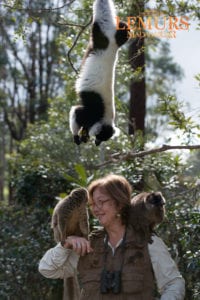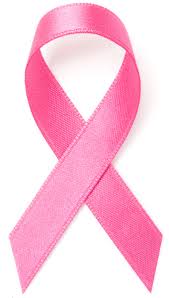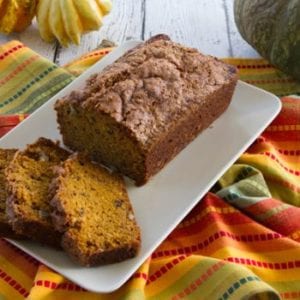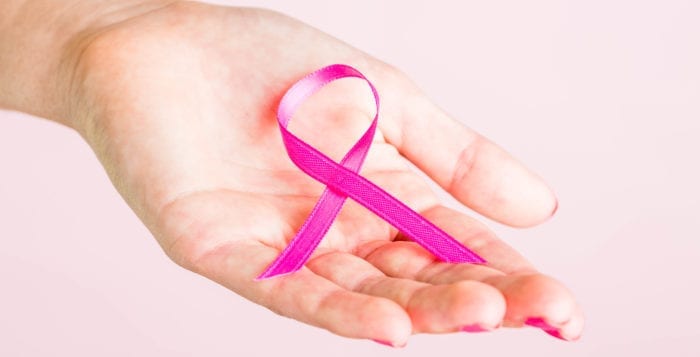MEET ROODY! Roody was rescued from Puerto Rico in an area where there was no electric power or water for the humans let alone dogs. Now safe at Kent Animal Shelter, he is a little shy because of his ordeal but will make a great pet once he gets familiarized with his new home. Roody comes neutered, microchipped and up to date on vaccines. Why not drop by and say hello? Kent Animal Shelter is located at 2259 River Road in Calverton. For more information on Roody and other adoptable pets at Kent, please call 631-727-5731 or visit www.kentanimalshelter.com.
Making Democracy Work: Women in New York State won the vote 100 years ago next week
By Lisa Scott
On Election Day next week, you may be offered a blue sticker that says “I Voted.” If you take a closer look, you might wonder why it has a quaint and old-fashioned image with the words “Honoring 100 Years of a Woman’s Right to Vote.” For every one of us that struggle, the victory and the legacy made a tremendous difference in our lives, rights and American democracy today.
The sticker’s image, chosen by public vote across New York State, is Long Island’s Rosalie Gardiner Jones (yes, that Gardiner’s Island and that Jones Beach!). Far from being a grandmotherly, stern face in a photograph, Jones was a flamboyant young socialite from the Oyster Bay-Cold Spring Harbor area who, much to the dismay of her anti-suffragist mother, preferred campaigning for women’s suffrage over the performance of her social duties.
Always with an eye for publicity, in 1912 she joined fellow suffragette Elisabeth Freeman in a trek across Long Island in a horse-drawn carriage to distribute suffrage pamphlets and literature, and in December of that year received much publicity for leading a 170-mile, 13-day march in the midst of winter from the Bronx to Albany to deliver petitions to the governor, demanding a woman’s suffrage amendment in the NYS Constitution.
Jones believed that the movement should exhibit a more military stance and discipline and thus began calling herself “The General.” She carried the suffrage message into small towns and villages with a personal attention that was both impassioned and provocative. After suffrage was achieved, she continued to campaign for equal rights and social reform until she died in 1978.
New Yorkers have long led the struggle for women’s rights; a fight with diverse people and disparate ideas (people disagreed vehemently for years about goals, partners and methods to further the cause). Seneca Falls is considered the birthplace of the women’s rights movement, and some of its greatest leaders, from Susan B. Anthony to Matilda Joslyn Gage and Elizabeth Cady Stanton (who summered in Shoreham with her suffragist daughter and family), did their pioneering work in the Empire State. In passing women’s suffrage in 1917, New York fueled the momentum for the entire nation to follow suit three years later.
Women vote today because of the women’s suffrage movement, a courageous and persistent political campaign that lasted over 72 years, involved tens of thousands of women and men and resulted in enfranchising one-half of the citizens of the United States. Inspired by idealism and grounded in sacrifice, the suffrage campaign is of enormous political and social significance, yet it is virtually unacknowledged in the chronicles of American history.
For women won the vote. They were not given it, granted it or anything else. They won it as truly as any political campaign is ultimately won or lost. And they won it, repeatedly, by the slimmest of margins, which only underscores the difficulty and magnitude of their victories. It was a movement of female organizers, leaders, politicians, journalists, visionaries, rabble rousers and warriors. It was an active, controversial, multifaceted, challenging, passionate movement of the best and brightest women in America, from all backgrounds, who, in modern parlance, boldly went where no woman had ever gone before.
The suffrage movement holds a particular relevance now as it has helped lead us as a country and a people to where we are today. It celebrates rights won and honors those who helped win them. It puts women into our national history as participants. It reminds us of the necessity of progressive leaders, organizers and visionaries in every local community. The legacy of those women and men 100 years ago is democracy at work for all: civil rights, gender diversity, equality and civic engagement.
For more about our local suffragists, read Antonia Petrash’s book, “Long Island and the Woman Suffrage Movement.” For thought-provoking insights on the suffrage movement and its legacy, read Robert Cooney’s essay, “Taking a New Look — The Enduring Significance of the American Woman Suffrage Movement,” and his comprehensive book, “Winning the Vote: The Triumph of the American Woman Suffrage Movement.”
Lisa Scott is the president of the League of Women Voters of Suffolk County, a nonprofit, nonpartisan organization that encourages the informed and active participation of citizens in government and influences public policy through education and advocacy. For more information, visit www.lwv-suffolkcounty.org, email [email protected] or call 631-862-6860.
SBU’s Patricia Wright warns a drier Madagascar threatens endangered lemur

By Daniel Dunaief
An elusive primate is living on a shrinking island within an island. The greater bamboo lemur, which is one of the world’s most endangered primates, now inhabits a small section of Madagascar, where it can find the type of food it needs to survive.
The greater bamboo lemur, which was one of numerous lemurs featured in the 2014 iMax movie, “Island of Lemurs: Madagascar,” is finding that the time when it can eat the most nutritious types of bamboo is narrowing each year amid a longer dry season.

In a publication last week in the journal Current Biology, Patricia Wright, the founder of Centro ValBio research campus, driving force behind the creation of Ranofamana National Park and a distinguished professor of anthropology at Stony Brook University, along with several other researchers, including Jukka Jernvall from the University of Helsinki and Alistair Evans from Monash University, showed that the population of lemurs is threatened by a changing climate. The bamboo that sustains the greater bamboo lemurs depends on water to produce shoots that are higher in nutrition.
Indeed, when the rains come, the new bamboo shoots are “filled with protein,” said Wright. Jernvall, however, predicted that the driest season will get longer by a day each year. By 2070, rains necessary for bamboo growth and greater bamboo lemur survival will be delayed by as much as two months.
This is problematic not only for the current generation of greater bamboo lemurs but also for the more vulnerable younger generations, who need their lactating mothers to eat more nutritious bamboo to help them grow. Bamboo shoots typically come up from the ground about two weeks after the rains begin, in the middle of November. Bamboo lemurs, whose annual clocks are set to the rhythm of an island off the southeast coast of Africa that is the size of California, are born around the time of these bamboo-shoot-producing rains.
“Any village elder will tell you that the rains used to come at about Nov. 15 and continue until March 15,” Wright said. “That’s the way the world was, even in the 1980s and 1990s and probably many years before that. Suddenly, we started to get some evidence of climate changes and periods of a longer dry season.”

Wright is currently in Madagascar, where she says there is a drought right now. “No water for our research station means no electricity since we are near a hydroelectric power plant,” she explained by email. In fact, in some years, the rains start as late as January, which reduces the food offerings for the mother lemur, who weighs about 6.5 pounds, and her offspring, who need considerable nutrition to grow from birth weights Wright estimates are less than half a pound. The lemur mother “has to have nutritious shoots to feed her baby milk,” Wright said. “She can survive on leaves and trashy stuff in the culm, but she can’t raise her babies” on it.
Wright and Jernvall worked together in 2005 on a study of climate and another type of lemur called sifakas, whose name comes from the alarm sound it makes. In their earlier work, Wright and Jernvall found that aging sifakas with worn teeth could still produce offspring, but that their infants typically died if the weather was dry during the lactation season, Jernvall explained in an email.
“This alerted us about the potential impact of climate change,” he continued. “The bamboo lemur were an obvious concern because they are critically endangered and because they eat the very tough bamboo.”
Jernvall said the work on bamboo lemurs combines Wright’s efforts in Madagascar with climate modeling he performed with Jussi Eronen at the University of Helsinki and an analysis of dental features conducted by Evans and Sarah Zohdy, who is currently at Auburn University. Stacey Tecot, who is on sabbatical from the University of Arizona, also contributed to the research.
Wright believes some efforts can help bring these bamboo lemurs, who survive despite consuming large amounts of cyanide in their bamboo diet, back from the brink. Creating a bamboo corridor might improve the outlook.
Growing bamboo would not only benefit the lemurs, who depend on it for their survival, but would also provide raw materials for the Malagasy people, who use it to construct their homes, to build fences and to cover their waterways.
Bamboo corridors could be a “win-win situation,” where scientists and local communities grew and then harvested these hearty grasses, Wright continued. She has started a bamboo pilot study near one of the small populations of lemurs and hopes the lemurs can expand their range.

Like other animals with unusual lifestyles, the greater bamboo lemurs offer a potential window into an unusual adaptation. Through their typical diet, lemurs consume a high concentration of cyanide, which is stored in the bamboo. Understanding the bamboo lemur could provide evidence of how one species manages to remain unaffected by a toxin often associated with spies and murder mysteries.
As a part of her efforts to improve the chances of survival for this lemur, Wright is considering moving some lemurs to a protected area. She needs permission from Madagascar officials before taking any such actions and recently met with Madagascar National Park official to discuss such remediation efforts.
In Madagascar, Wright said observing the bamboo lemur is challenging because it is such a “cryptic animal.” She has sat beneath a tree where a lemur is hiding for seven hours waiting for it to emerge, watching as a lemur brought in its legs and curled up its body to hide from the scientist’s inquisitive eyes. “I’d get really hungry, so they would win and I would leave,” Wright recalled.
She suggests that the data in the Current Biology article demonstrates the urgency to take action to protect these primates. “We are trying our best to help the bamboo lemur not go extinct,” she said. “Bamboo corridors should help, but we may have to irrigate the bamboo during November to January.”
Photo of the Week
PRETTY IN PINK Elisa Hendrey of Sound Beach captured this stunning image on her iPhone on Sept. 28. She writes, “This photo was taken at sunset at Mount Sinai Harbor, one of my favorite spots for viewing the setting sun.”
Send your Photo of the Week to [email protected].
A tale of a coveted trophy
What would a victory be without a trophy? We faced that awful question this week.
In the championship game, my daughter’s volleyball team battled their opponent and their nerves to win that coveted trophy, to claim the top honors in their division, and to cap off a successful and rewarding season that involved floor burns, mishits, turned ankles and all manner of emotional challenges as they went toe-to-toe with teams in gyms filled with exuberant fans.
Nothing went right in the beginning of the match. They gave away point after point, until the unflappable coach, whose only sign of anxiety was a few extra gulps of water, called timeout and told the team to relax and play their game.
They were down 12-2 in a 25-point game. Maybe, my wife and I thought, they’d make the first game respectable, get their bearings and then win the second and third games. The benefit of a best-of-three-game set is that they didn’t have to win the first game.
And then a funny thing happened on the way to a potential lopsided loss. They pulled themselves together and they made important shots that landed just inside the line. Momentum, which is such an intangible, shifted quickly, forcing the other coach to call a hasty timeout.
Ultimately, they won that first set, 25-23. The second set was closer throughout, but they also won that one, 25-20, leading to a euphoric celebration. They took turns holding a trophy, which had a volleyball figurine and a plaque.
The coach handed the trophy to my daughter, who was the captain. She cradled it like it was an infant, passing it gently to her teammates who posed for their own pictures with the team’s prize. She got to take the trophy home for the weekend. I drove her friend and her to a diner for some celebratory curly fries and raced home to relatives who were eating a wider variety of food.
After the meal, I offered to take Uncle Jordan, who had come out from the city, back to the train. My wife graciously suggested he sit in the front seat. As soon as he sat down, he asked, “Hey, what’s that?”
Yup, he sat on the trophy, wounding our daughter’s “baby.” When I turned on the light in the car, I saw that the figurine was still intact, but the plaque dangled at an angle.
Jordan laughed. Our son was in hysterics. My wife, who was in the back seat, laughed nervously, while I considered going into panic mode, wondering if I should call the factory in Singapore to ask it to ship another trophy overnight.
We thought about gluing the pieces back together, but that would be like bringing a messy art project to school. Maybe we could take it out of the car and run over it 20 times, and then say we lost it. No, destroying it wasn’t the answer.
“Take it to Home Depot,” Jordan suggested.
What if they couldn’t fix it? What would we tell our daughter?
When she got to our house that night, I did everything I could to keep her from asking about, or looking for, the coveted trophy.
The next morning, we raced to Home Depot, where a couple of good-humored men at the tool rental section got to work. Fortunately, they repaired it. When we returned, we shared the story with our daughter who laughed, too, even as she compared the pictures of the trophy from the night before to the rescued object in her hand. Somehow, like her team, the trophy endured.
This is the year for critically important local elections
The issue of the newspaper that you now hold in your hands or are reading on an electronic device is an annual superstar. Only once in each year do we publish a comprehensive preelection section that speaks to the upcoming races. We invite the opponents together to our offices for each local race and pepper them with questions until we feel we have a good handle on them. This section is the distillation of many hours of interviews with the candidates and follow-up research, putting together the information that we are privileged to learn. Then we share that information with you.
We go even further. After careful consideration, sometimes over a period of many days, we will come to a conclusion as to whom to vote for and tell you what we think and why. These are our endorsements and may be found on the editorial pages in the back of the paper. We also include a sample ballot so you can walk into your polling place and know the layout on which you will mark your choices.
We are the only community newspapers that span three towns in Suffolk: Brookhaven, Smithtown and Huntington. So as you can imagine, there are a good number of races in which we need to be involved. In two of these towns, there will be a new day for there are open seats at the top of the ticket for the first time in more than a score of years. In Huntington, longtime Supervisor Frank Petrone decided not to run again, and so Edwards is giving up her seat on the town board, as she and state Assemblyman Lupinacci compete to lead the town. Candidates for the two town board seats are incumbent Cuthbertson and challengers Smyth, Leonick and Rogan. Berland, too, is leaving her seat on the board and trying for a Suffolk County legislative seat, running against Gavilla. Kennedy is challenged by Hyms for her seat in the legislature.
Smithtown Township has the same open top position since Vecchio lost the Republican primary and will not be running for supervisor for the first time in 40 years. Instead the residents will have Holst, Wehrheim or Slevin as their new leader. The voters will also choose two board members among Fortunato, Doyle, McCarthy, Nowick, Lohmann and Stoddard.
Brookhaven, in contrast, has no open seats but plenty of competition. Incumbent Romaine is facing a challenge from Harrington for supervisor. In our coverage district, incumbent Councilwoman Cartright is running against challenger Canale, and incumbent Bonner is being opposed by Goodman. For the county Legislature in our Brookhaven area, we have incumbent Anker versus Pollakusky and incumbent Hahn challenged by Flood. Also in play is the Brookhaven Town superintendent of highways position, as incumbent Dan Losquadro is challenged by Portesy.
Two of the most closely watched contests in Suffolk County are for district attorney and sheriff. Both of those positions are open seats. Police Commissioner Sini is running against Perini for DA and Stony Brook University Deputy Police Chief Zacarese is opposed by Toulon in the race for sheriff.
On top of our usual duties at TBR News Media, we interviewed them all. It was exhausting but exhilarating, as we learned more than we already knew from the incumbents and a great deal about the challengers. We heard about the issues that are on the minds of the North Shore community. The electorate is concerned about the escalating opioid epidemic that is killing hundreds, particularly of our younger people. Residents also continue to be frustrated about high property taxes, public safety — especially as it relates to the insidious growth of gangs, the traffic in Smithtown, the homeless in Brookhaven and the brain drain that is the result of not enough high-paying jobs and affordable housing.
We also tell you our opinion of a constitutional convention. We oppose it, fearing a Pandora’s box containing many evils.
We are always impressed that residents will come forward to run for public office. Campaigns are a lot of work, and being a public servant has its tribulations. This year, more than most others, we are further impressed by the high quality of candidates. We urge you to do one of the two things you are allowed only if you are an American citizen. Please be sure to VOTE.
P.S. The other is to serve on a jury.
Medical Compass: Breast cancer prevention
Exercise significantly reduces breast cancer risk in postmenopausal women
By David Dunaief, M.D.

Pink is everywhere this month, as we make a fashion statement to highlight Breast Cancer Awareness Month. This awareness is critical. The incidence of invasive breast cancer in 2017 in the U.S. is estimated to be over 250,000 new cases, with approximately 40,000 patients dying from this disease each year (1). The good news is that from 2003 to 2012 there was decreased mortality in the U.S. across all racial and ethnic populations (2).
We can all agree that screening has merit. Television commercials tout that women in their 30s and early 40s have discovered breast cancer with a mammogram, usually after a lump was detected. Does this mean we should be screening earlier? Screening guidelines are based on the general population that is considered “healthy,” meaning no lumps were found nor is there a personal or family history of breast cancer.
All guidelines hinge on the belief that mammograms are important, but at what age? Here is where divergence occurs; experts can’t agree on age and frequency. The U.S. Preventive Services Task Force recommends mammograms starting at 50 years old, after which time they should be done every other year through age 74 (3). The American College of Obstetricians and Gynecologists recommends consideration of annual mammograms starting at 40 years old and continuing until age 75. They encourage a process of shared decision-making between patient and physician (4).
The best way to treat breast cancer — and just as important as screening — is prevention, whether it is primary, preventing the disease from occurring, or secondary, preventing recurrence. We are always looking for ways to minimize risk. What are some potential ways of doing this? These may include lifestyle modifications, such as diet, exercise, obesity treatment and normalizing cholesterol levels. Additionally, although results are mixed, it seems that bisphosphonates do not reduce the risk of breast cancer nor its recurrence. Let’s look at the evidence.
Bisphosphonates

Bisphosphonates include Fosamax (alendronate), Zometa (zoledronic acid) and Boniva (ibandronate) used to treat osteoporosis. Do they have a role in breast cancer prevention? It depends on the population, and it depends on study quality.
In a meta-analysis involving two randomized controlled trials, results showed there was no benefit from the use of bisphosphonates in reducing breast cancer risk (5). The population used in this study involved postmenopausal women who had osteoporosis, but who did not have a personal history of breast cancer. In other words, the bisphosphonates were being used for primary prevention.
The study was prompted by previous studies that have shown antitumor effects with this class of drugs. This analysis involved over 14,000 women ranging in age from 55 to 89. The two trials were FIT and HORIZON-PFT, with durations of 3.8 and 2.8 years, respectively. The FIT study involved alendronate and the HORIZON-PFT study involved zoledronic acid, with these drugs compared to placebo. The researchers concluded that the data were not evident for the use of bisphosphonates in primary prevention of invasive breast cancer.
In a previous meta-analysis of two observational studies from the Women’s Health Initiative, results showed that bisphosphonates did indeed reduce the risk of invasive breast cancer in patients by as much as 32 percent (6). These results were statistically significant. However, there was an increase in risk of ductal carcinoma in situ (precancer cases) that was not explainable. These studies included over 150,000 patients with no breast cancer history. The patient type was similar to that used in the more current trial mentioned above. According to the authors, this suggested that bisphosphonates may have an antitumor effect. But not so fast!
The disparity in the above two bisphosphonate studies has to do with trial type. Randomized controlled trials are better designed than observational trials. Therefore, it is more likely that bisphosphonates do not work in reducing breast cancer risk in patients without a history of breast cancer or, in other words, in primary prevention.
In a third study, a meta-analysis (group of 36 post-hoc analyses — after trials were previously concluded) using bisphosphonates, results showed that zoledronic acid significantly reduced mortality risk, by as much as 17 percent, in those patients with early breast cancer (7). This benefit was seen in postmenopausal women but not in premenopausal women. The difference between this study and the previous study was the population. This was a trial for secondary prevention, where patients had a personal history of cancer.
However, in a RCT, the results showed that those with early breast cancer did not benefit overall from zoledronic acid in conjunction with standard treatments for this disease (8). The moral of the story: RCTs are needed to confirm results, and they don’t always coincide with other studies.
Exercise
 We know exercise is important in diseases and breast cancer is no exception. In an observational trial, exercise reduced breast cancer risk in postmenopausal women significantly (9). These women exercised moderately; they walked four hours a week. The researchers stressed that it is never too late to exercise, since the effect was seen over four years. If they exercised previously, but not recently, for instance, five to nine years ago, no benefit was seen.
We know exercise is important in diseases and breast cancer is no exception. In an observational trial, exercise reduced breast cancer risk in postmenopausal women significantly (9). These women exercised moderately; they walked four hours a week. The researchers stressed that it is never too late to exercise, since the effect was seen over four years. If they exercised previously, but not recently, for instance, five to nine years ago, no benefit was seen.
To make matters worse, only about one-third of women get the recommended level of exercise every week: 30 minutes for five days a week. Once diagnosed with breast cancer, women tend to exercise less, not more. We need to expend as much energy and resources emphasizing exercise as a prevention method as we do screenings.
Soy intake
Contrary to popular belief, soy may be beneficial in reducing breast cancer risk. In a meta-analysis (a group of eight observational studies), those who consumed more soy saw a significant reduction in breast cancer compared to those who consumed less (10). There was a dose-response curve among three groups: high intake of >20 mg per day, moderate intake of 10 mg and low intake of <5 mg.
Those in the highest group had a 29 percent reduced risk, and those in the moderate group had a 12 percent reduced risk, when compared to those who consumed the least. Why have we not seen this in U.S. trials? The level of soy used in U.S. trials is a fraction of what is used in Asian trials. The benefit from soy is thought to come from isoflavones, plant-rich nutrients.
Western vs. Mediterranean diets
A Mediterranean diet may decrease the risk of breast cancer significantly.
In an observational study, results showed that, while the Western diet increases breast cancer risk by 46 percent, the Spanish Mediterranean diet has the inverse effect, decreasing risk by 44 percent (11). The effect of the Mediterranean diet was even more powerful in triple-negative tumors, which tend to be difficult to treat. The authors concluded that diets rich in fruits, vegetables, beans, nuts and oily fish were potentially beneficial.
Hooray for Breast Cancer Awareness Month stressing the importance of mammography and breast self-exams. However, we need to give significantly more attention to prevention of breast cancer and its recurrence. Through potentially more soy intake, as well as a Mediterranean diet and modest exercise, we may be able to accelerate the trend toward a lower breast cancer incidence.
References: (1) breastcancer.org. (2) cdc.gov. (3) Ann Intern Med. 2009;151:716-726. (4) acog.org. (5) JAMA Inter Med online. 2014 Aug. 11. (6) J Clin Oncol. 2010;28:3582-3590. (7) 2013 SABCS: Abstract S4-07. (8) Lancet Oncol. 2014;15:997-1006. (9) Cancer Epidemiol Biomarkers Prev online. 2014 Aug. 11. (10) Br J Cancer. 2008;98:9-14. (11) Br J Cancer. 2014;111:1454-1462. Dr. Dunaief is a speaker, author and local lifestyle medicine physician focusing on the integration of medicine, nutrition, fitness and stress management.
Your Turn: How Halloween, horror shaped me
By Kevin Redding
 I can’t remember a time when I wasn’t enamored with Halloween and, by default, horror in general. It could be argued that my birthday falling in late October has something to do with an obsession with the macabre, but I can’t help but think it goes way beyond that.
I can’t remember a time when I wasn’t enamored with Halloween and, by default, horror in general. It could be argued that my birthday falling in late October has something to do with an obsession with the macabre, but I can’t help but think it goes way beyond that.
When I was very young, I became infatuated with a couple important things — one, the work of Tim Burton (specifically “Batman” and “Beetlejuice”), so much so that the only guaranteed remedy to silence this curly-haired toddler’s wails was putting one of his movies in the VCR. I’d sniffle my last cry and watch with attentive giddiness at the Gothic sets, whimsical dark humor and cast of weird characters. The other early influence in my life was Charles Addams — the longtime Westhampton Beach resident, renowned cartoonist for The New Yorker and, most importantly, creator of “The Addams Family.”
Around age 4 or 5, one of my uncles gifted me with a large book called “The World of Charles Addams,” a sprawling tome that contained hundreds of pages of the cartoonist’s famously humorous, creepy artwork and comic strips centered around the grotesque, the misfitted, the spooky, and altogether ooky.
For years my eyes were glued to that book, and I have just about memorized each and every one of its black-and-white and full-cover drawings at this point. It was the first time I remember being truly swept up by art and storytelling — his spooky settings, characters and sensibilities captured my imagination like nothing else before — and it inspired me to put pen to paper and create my own characters and stories, tapping into an artistic, creative side that has followed me into my mid-20s.
The Burton films and “The Addams Family” movies I devoured at this time served as great gateways to the more hard-core horror titles I discovered a few years later. One summer, as I was relaxing before the big move to fourth grade, my cousins and I, joined by my aunt and uncle, gathered around the TV in their living room and watched the original “House on Haunted Hill,” that hokey and wonderful Vincent Price classic.
It would be the start of a weekend tradition, dubbed Saturday Scary Movie Night, wherein we watched scary movies from a bygone era, namely the ’30s, ’40s, ’50s and ’60s. Up until this point, I don’t think I was really exposed to old horror (I loved all the classic monsters but really only knew them as toys, lunch boxes and cartoons … I didn’t exactly know where they came from).

I remember watching “Frankenstein,” “The Wolfman,” “The Invisible Man,” “The Creature from the Black Lagoon,” “Abbott and Costello Meet Frankenstein,” “Nosferatu,” “The Day the Earth Stood Still” and “The Birds.” I loved them all, and they gave me a real appreciation and adoration of old movies and the art of filmmaking in general. After these viewings, I always seemed to go to sleep unscathed, at least until we watched “Dracula” starring Bela Lugosi, which haunted me and led to my first and only sleepwalking escapade. I was scared by it, but also mesmerized by it. From then on, I was hooked. If a movie was scary or had monsters in it, I had to watch it.
And horror is what really got me interested in reading. Entranced by the freaky covers of “Goosebumps” by R.L. Stine, I consumed any of those books available to me, either from the school or public library. As I got a little bit older, I gravitated toward Stephen King, whose books I ate up — especially “The Dead Zone,” “Firestarter” and “Four Past Midnight” — and served as incredible textbooks on how to craft tension, drama and likeable fictional characters. It would be his memoir/advice manual for budding writers, “On Writing,” that sealed the deal for me for what I wanted to do with my life.
So, naturally, Halloween has always meant so much to me. I mean, as a kid, I already walked around in a vampire’s cape and that was in the middle of April, so to have an entire day/month wherein that fashion choice is socially acceptable and encouraged? Sign me up.

As a kid, I was definitely an oddball and not exactly brimming with confidence. I didn’t have a torturous childhood, but I was certainly on the outskirts of my peers. In the first grade, I had curly hair and I was missing my front teeth, which paved the way for lots of jokes. I was also quiet and painfully shy and never quite knew what to talk about with others, and so, I looked to fictional characters like the Addams family for an escape. I even went as Uncle Fester for Halloween one year, in a really great handmade costume (Thanks mom!), complete with light bulb in mouth. It was a beautiful thing, and I point to horror as being what helped me come out of my shell and feel okay with who I was. For those of us who have ever wanted to hide or escape or be someone else for a day, Halloween is the day that encourages that.
It’s the one day a year when the weird, creative and imaginative parts of ourselves can be unleashed without any hesitation; it’s a celebration of human fear, of community and the art of pretending. And seriously, in this world we’re living in, couldn’t we all use a day of pretending?
Cooking Cove: The sad tale of Peter, Peter Pumpkin Eater
By Barbara Beltrami
‘Peter, Peter, pumpkin eater,
Had a wife and couldn’t keep her;
He put her in a pumpkin shell
And there he kept her very well.’
— Mother Goose
Poor Peter — a sad story of a husband who was still living in the 19th or even 20th century. He just didn’t get it. Perhaps, if he had respected her freedom, he wouldn’t have had a problem with her. She would have been glad to cook him all kinds of wonderful treats, like pumpkin walnut bread to savor with his morning coffee; or she could have simmered him a nice pot of creamy pumpkin soup to slurp contentedly with a glass of wine after a hard day’s work. Or maybe if they had had a better understanding of each other, they could have planned a date night and cooked some delectable dishes together like ravioli with pumpkin sauce.
The following recipes may not exactly liberate your kitchen or your relationship, but they will liberate you from the notion that pumpkins are good for nothing more than jack-o’-lanterns and pies.
Ravioli with Pumpkin Sauce

YIELD: Makes 4 servings
INGREDIENTS:
One 12-ounce package of fresh cheese-filled ravioli
3 tablespoons extra virgin olive oil
1 small onion, minced
2 cloves garlic, minced
1 sprig fresh rosemary
1 cup pureed fresh pumpkin (or canned if you can’t be bothered!)
1 cup chicken broth
¾ cup cream
Salt and freshly ground black pepper
½ cup freshly grated Parmesan cheese (preferably Parmigiano-Reggiano)
DIRECTIONS: Cook ravioli according to package directions. Set aside to keep warm. Place medium saucepan over medium heat; add oil, then onion, garlic and rosemary and cook over medium heat just until garlic and rosemary begin to release their aromas and onion is translucent. Remove rosemary and discard. Stir in pumpkin puree, chicken broth, cream and salt and pepper and continue cooking, stirring frequently, over medium-low heat until mixture is thickened, about 10 to 15 minutes. Keep on lowest possible heat while you transfer ravioli to serving bowl. Top ravioli with pumpkin sauce and sprinkle with grated cheese. Serve hot or warm with a green or mixed salad and rustic bread with extra virgin olive oil.
Pumpkin Walnut Bread

YIELD: Makes one loaf
INGREDIENTS:
2 cups flour
2 teaspoons baking powder
½ teaspoon baking soda
1 teaspoon salt
1 teaspoon ground cinnamon
½ teaspoon ground ginger
¼ teaspoon ground nutmeg
1 cup cooked pumpkin, pureed and drained of all excess liquid
½ cup granulated sugar
½ cup brown sugar
½ cup milk
2 eggs, beaten
½ cup unsalted butter, softened
1 cup coarsely chopped walnuts
DIRECTIONS: Preheat oven to 350 F. Grease a 9- by 5- by 3-inch loaf pan. In a medium bowl, sift together flour, baking powder, baking soda and salt. Add cinnamon, ginger and nutmeg and mix thoroughly. In another medium bowl, combine pumpkin, sugars, milk, eggs and butter and stir in to dry mixture. Fold in walnuts. Transfer mixture to prepared loaf pan and bake for 50 minutes or until cake tester inserted in center comes out clean. Cool 10 minutes; remove from pan and finish cooling on rack. Serve with butter, cream cheese or apple butter and mugs of hot coffee, tea or chocolate or glasses of ice cold milk.
Creamy Pumpkin Soup

YIELD: Makes 6 to 8 servings
INGREDIENTS:
2 tablespoons unsalted butter
1 tablespoon olive oil (or more, if needed)
2 pounds pumpkin, peeled, seeded and diced
1 apple, peeled, cored and diced
1 large onion, diced
2 cups chicken broth
Leaves from 4 sprigs fresh sage, chopped
Salt and freshly ground black pepper to taste
2 cups milk or light cream
4 whole sage leaves
DIRECTIONS: In a large heavy skillet, heat butter and oil; add pumpkin, apple and onion and cook until very soft, about 30 minutes. (Add a little water if it starts to dry out or brown too fast.) Stir in chicken broth, sage, salt and pepper and cook 5 more minutes. Let cool 10 or 15 minutes, then puree mixture in processor or blender. Transfer to large saucepan over low heat and using a wire whisk, beat in milk or cream. Continue cooking and stirring until mixture begins to thicken and is on the verge of boiling. Serve hot garnished with whole sage leaves and accompanied by local broccoli, cauliflower or Brussels sprouts.
This is a revision of an article written by the author and published in this newspaper in 1988.
Wine and Cheese: Merlot … the blackbird grape
By Bob Lipinski
“Drinking the right wine at the right time is an art.” — Horace A. Vachell

Some believe the name merlot was given to this black grape variety because blackbirds (known as merlau in Occitan in southern France) liked eating its plump, sweet-tasting flesh. Whether the story is factual cannot be determined, but what we do know is the first mention of merlot seems to be in the late 1780s in the Libourne district of Bordeaux, France.
According to DNA testing conducted in the mid-1990s, it was determined that the parents of the merlot grape are cabernet franc and the lesser-known Magdeleine Noire des Charentes grape from France.
Merlot is a medium acid red grape variety acknowledged worldwide as producing some of the finest dry red wines. It is the predominant red grape variety of the Bordeaux region as well as in other parts of France. Merlot is also grown in most wine-producing countries and used in wines from light-bodied and fruity to big, full-bodied wines of structure, tannin and great longevity.
Merlot is used in many red wine blends, offering fruit, succulence, acidity, color and overtones of jam and spices. When bottled as a separate varietal, its flavors can be subtle or dramatic, easily competing with some of the finest cabernet sauvignon wines. Two areas of the world where merlot really excels is the Pomerol district of Bordeaux and, surprisingly, in Washington State.
In the U.S., the Louis M. Martini Winery of Napa Valley, California, bottled the first “Merlot” as a separate varietal, blending the 1968 and 1970 wines from its Edgehill property, which was released in 1971.
Depending on where it is grown, merlot offers a wide spectrum of aromas and flavors. Merlot is generally bright ruby-red in color, producing scented, fruity wines, smelling and tasting very much of bell pepper, berries (blackberry, blueberry, cranberry, raspberry), black cherry, black currants, black olive, black tea, cedar, chocolate, cinnamon, coffee, green olive, herbs, licorice, maraschino cherry, peppermint, plum and spices.
Below are some good examples of merlot I recently had the opportunity to sample:
2014 Heller Estate “Merlot” Carmel Valley, California. Dark-colored with an intense bouquet and flavor of blackberries, black currants and cherries. Full-bodied, tannic and quite youthful with a lingering aftertaste of spicy herbs. Anybody for a rack of lamb with rosemary?!
2014 Boxwood Winery “Merlot” Trellis; Middleburg, Virginia. Yes, Virginia! The wine is dark colored with a full bouquet of spicy black cherries, black raspberries and some oak. Smooth and so easy to drink with a long aftertaste. Serve with some grilled portobello mushrooms.
2014 Selby “Merlot” Russian River Valley, California. Medium-ruby color with a fruity bouquet of fresh and dried berries, mint and hints of cranberry. Baking spices along with some wood and dried plums abound. A dish of pasta with some sun-dried tomatoes works for me.
Bob Lipinski, a local author, has written 10 books, including “101: Everything You Need to Know About Whiskey” and “Italian Wine & Cheese Made Simple,” available on Amazon.com. He conducts training seminars on wine, spirit and food and is available for speaking engagements. He can be reached at www.boblipinski.com or [email protected].











